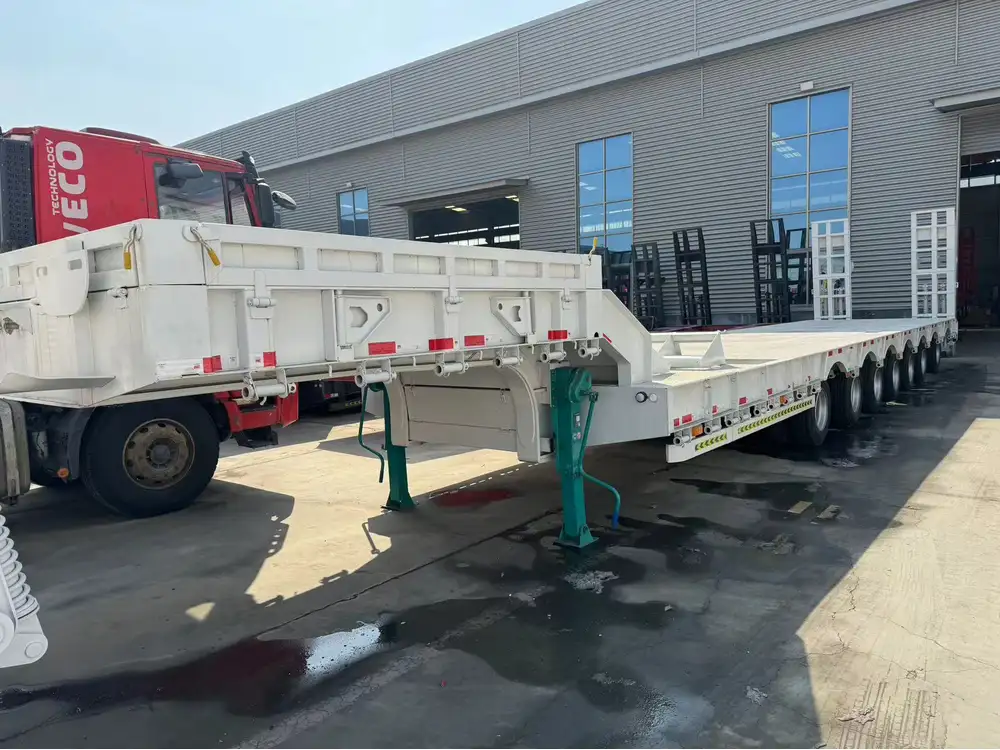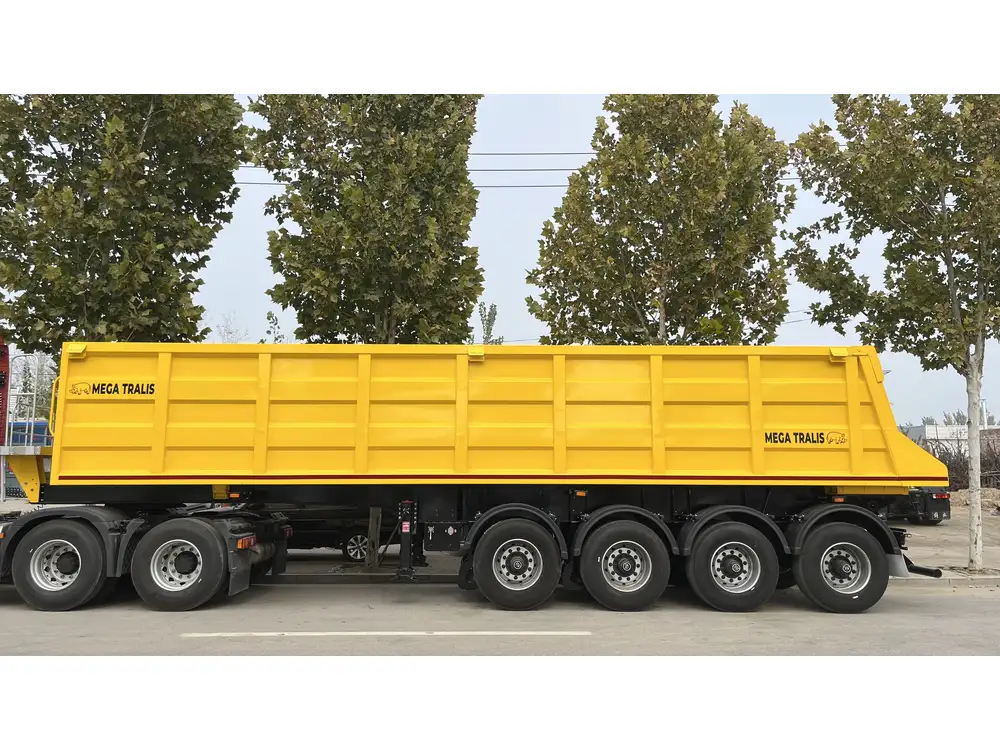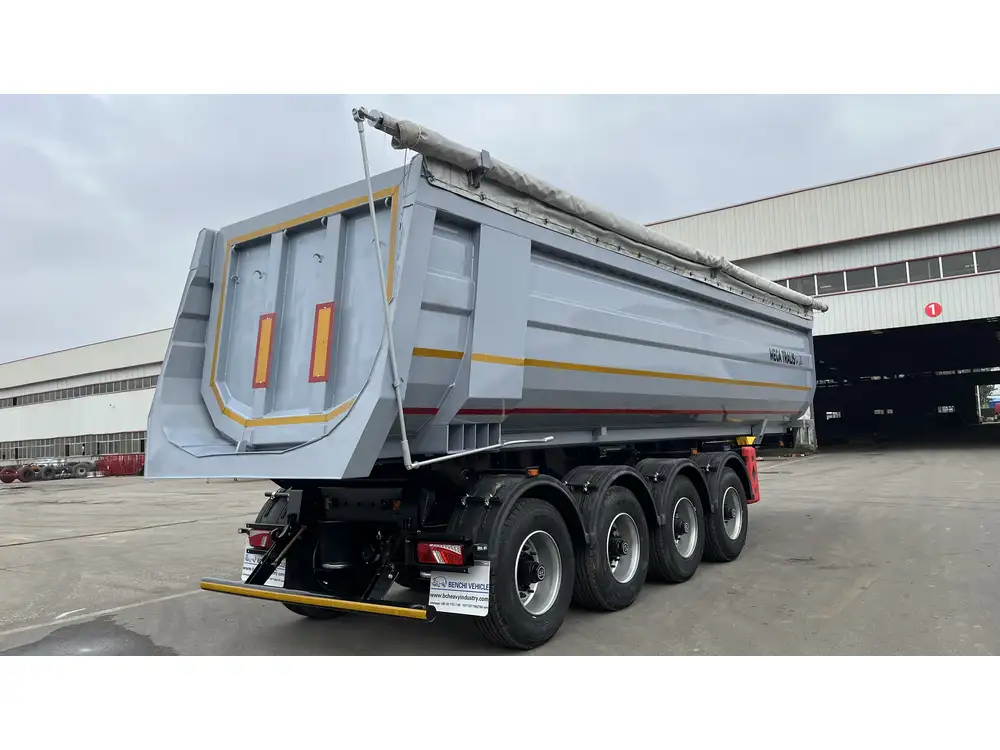When it comes to ensuring the safety and integrity of cargo transport, maintaining semi-trailer doors is an often-overlooked yet critical aspect. Poorly functioning doors can lead to cargo damage, safety hazards on the road, and loss of revenue. This article delves into the methods and best practices for tightening up semi-trailer doors, ensuring they provide maximum protection for your load while enhancing operational efficiency.
Understanding Semi-Trailer Doors: Types and Common Issues
Before discussing how to effectively tighten up your semi-trailer doors, it’s essential to understand the types of semi-trailer doors and the common issues they face.
| Type of Door | Description | Common Issues |
|---|---|---|
| Swing Doors | Two separate doors that swing open. | Misalignment, worn hinges, loose latches. |
| Roll-Up Doors | Metal slats that roll up into a container. | Jamming, cable failure, tension imbalance. |
| Lift-Away Doors | Single panel that lifts vertically. | Tracks misaligned, hydraulic failure. |
| Sliding Doors | Doors that slide open along a track. | Track obstructions, worn rollers, loose locks. |
How Semi-Trailer Doors Operate
Each door type operates under different mechanisms, which influences how they can be secured. Swing and sliding doors typically feature locking mechanisms that can become loose over time, while roll-up and lift-away doors often depend on cables and hydraulic systems that must remain taut and functional.

Diagnosing Door Issues
The first step in tightening semi-trailer doors is diagnosing any issues. Here’s how to assess your doors effectively:
- Visual Inspection: Examine the door and frame for visible signs of wear, alignment issues, or obstructions.
- Listen for Sounds: Engage the door mechanism and listen for unusual sounds such as grinding or squeaking.
- Check Alignment: Ensure that doors sit flush against the frame when closed. Misalignment is a common issue that leads to poor sealing.
- Test Seals: Check weather stripping and door seals for degradation. They should maintain an airtight seal to protect cargo.
Essential Tools and Materials
To tighten up semi-trailer doors effectively, certain tools and materials will be necessary. Here’s a quick list of what you might need:
| Tool/Material | Purpose |
|---|---|
| Wrench Set | Tightening hinges and locks. |
| Screwdriver Set | Adjusting screws on locks and fittings. |
| Lubricant (WD-40 or silicone spray) | Reducing friction in moving parts. |
| Replacement Weather Stripping | Upgrading seals to prevent air leakage. |
| Jacks or A-Frames | Adjusting door alignment if necessary. |
| Pliers | For tightening cables and other fittings. |
How to Tighten Semi-Trailer Doors: Step-by-Step Guide

Step 1: Preparation
Before beginning any repairs, ensure you’re working in a safe environment. Park the semi-trailer on a flat surface and engage the parking brake. If necessary, raise the trailer with jacks to give you full access to the doors.
Step 2: Inspect and Tighten Hinges
Check the hinges for signs of wear or rust. If the hinges are loose:
- Use a wrench to tighten all hinge bolts.
- If they’re worn out, consider replacing them to maintain door stability.
- Apply lubricant to facilitate smooth opening and closing.
Step 3: Secure Locks and Latches
Check the locking mechanisms. If locks are loose:
- Use a screwdriver to ensure all components are secure.
- Replace any rusted or damaged locks.
- Regularly lube the locks to prevent sticking.

Step 4: Adjust Door Alignment
Misalignment can cause leaks and poor security. To adjust the alignment:
- If dealing with swing doors, loosen the hinge bolts slightly and adjust the door until it sits squarely in the frame.
- For roll-up doors, ensure that the door tracks are clean and free from obstructions. Adjust the tension cables if needed.
- Lock things back in place once the doors are properly aligned.
Step 5: Replace Weather Stripping
A damaged weather seal can adversely affect the integrity of the cargo space:
- Remove old weather stripping by peeling it away from the surface.
- Clean the area to remove any adhesive residue.
- Apply new weather stripping, ensuring a snug fit along the entire perimeter of the door.
Step 6: Post-Repair Test
Once adjustments and repairs are made:
- Open and close the door several times to ensure smooth operation.
- Check that the door locks securely in place across the entire length.
- Conduct a water test (spraying water onto the closed door) to check for leaks, ensuring that the seals work effectively.

Best Practices for Maintenance
To ensure long-lasting functionality, preventative maintenance is crucial. Consider these best practices:
- Regular Inspections: Conduct routine checks every few months especially before and after long hauls.
- Cleanliness: Keep the door tracks and hinges clean and free from dust and residue.
- Lubrication: Regularly apply lubricant to moving parts to reduce wear.
- Documentation: Maintain a log of inspections and repairs for record-keeping and to anticipate future maintenance needs.
Troubleshooting Common Semi-Trailer Door Problems
Even with the most diligent of maintenance, issues may arise. Here’s how to troubleshoot common problems:
| Problem | Possible Cause | Solution |
|---|---|---|
| Door Won’t Close Properly | Misalignment | Adjust hinges and check latches. |
| Gaps/Leaks Around Seals | Worn or damaged weather stripping | Replace the stripping. |
| Door Jams During Operation | Obstructions or damaged tracks | Clean tracks and lubricate. |
| Hard to Open/Close | Lack of lubrication or damaged hinges | Lubricate or replace hinges. |
Frequently Asked Questions (FAQs)

How often should I inspect my semi-trailer doors?
We recommend inspecting semi-trailer doors every few months, with particular attention paid before long journeys or when transporting sensitive cargo.
What should I do if a door won’t lock?
If a door won’t lock, first clean and lubricate the locking mechanism. If problems persist, check for misalignment or damage to the lock that may require replacement.
Are there specific brands of weather stripping that are better?
While many brands offer quality weather stripping, select one that suits your specific door type and climate conditions. For best results, opt for durable, weather-resistant materials.

Conclusion
Tightening semi-trailer doors is not merely a matter of ensuring the doors close; it’s about preserving the integrity of your cargo and the safety of your operation. By regularly inspecting, maintaining, and repairing the doors, you can avoid costly damages, enhance your operational efficiency, and ensure peace of mind on every journey.
Investing time and attention in this maintenance process can yield significant returns — both in the longevity of your trailers and the safety of your cargo. Make it a routine practice, follow the above methods, troubleshoot effectively when problems arise, and commit to excellence in semi-trailer door management.



